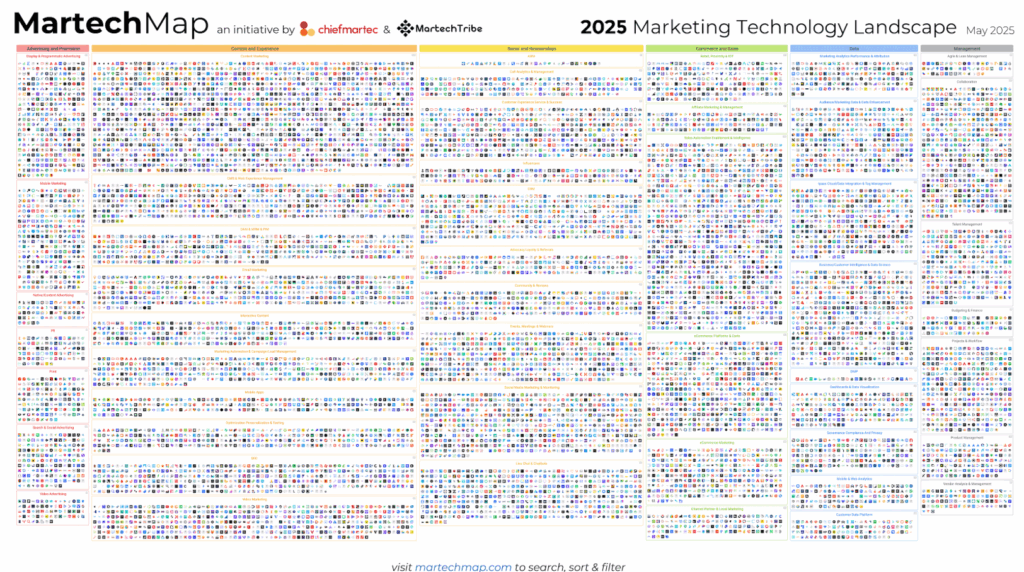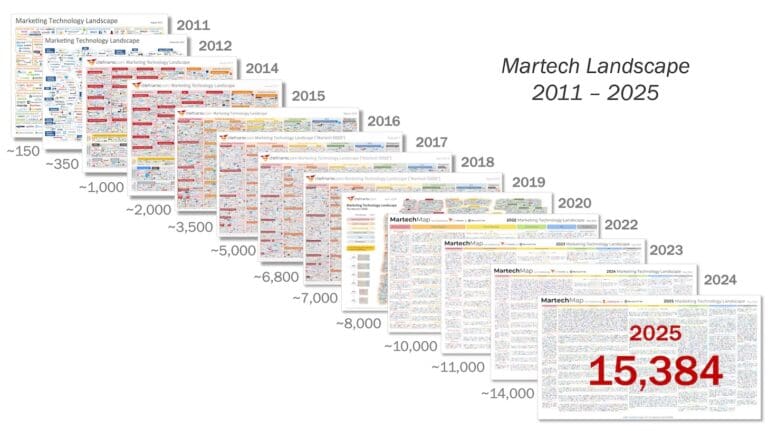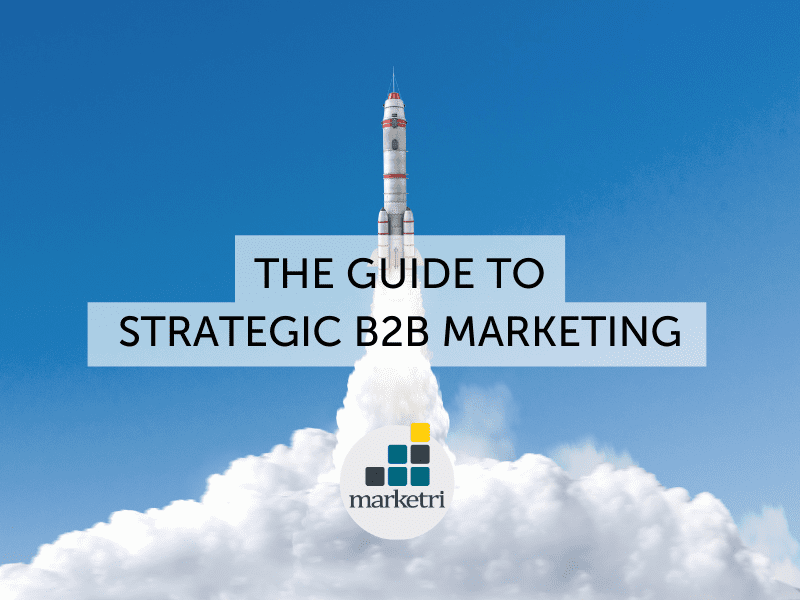When Martech Multiplies: The Paradox of Choice Meets the AI Gold Rush
Almost 30 years ago, I experienced one of those unexpected New York moments—Reggie Jackson stopped to pet our Golden Retriever, aptly named Fenway. I didn’t recognize the baseball legend; he simply admired our dog and asked if we were from Boston.
It wasn’t until moments later, after this casual exchange, that I noticed my husband—who had maintained remarkable composure throughout— was barely containing his excitement. “Do you know who that was?” he whispered, beside himself at having just met baseball royalty.
A few years later, I had another unexpected brush with greatness. Driving through Harvard, I spotted Clayton Christensen, his towering 6’8″ frame unmistakable even from a distance. I’m guessing most people wouldn’t have given him a second glance, but to me, he was intellectual royalty. He fundamentally shaped my understanding of how businesses evolve and transform markets. His theory of disruptive innovation has echoed in every product launch and technological breakthrough I’ve witnessed since.
Fast forward to today, and we’re living in what might be the ultimate case study in disruption: the marketing technology landscape. The long tail of martech is at an overwhelming point. Too many companies. Too many promises. Too little clarity.
The 2025 Marketing Technology Landscape just dropped, and yes, it’s still growing.

Now clocking in at 15,384 solutions—up 9% from last year—this sprawling supergraphic has become both a symbol of innovation and a source of anxiety for marketers. With AI-native tools proliferating and custom-built apps exploding in the “hypertail,” the question isn’t just what’s next. It’s: How do we make sense of any of this?
Marketers Are Staring Into the Martech Abyss
If you’ve ever zoomed into that infamous martech slide deck until your browser starts crying, you know the feeling: overwhelm. Decision fatigue. Paradox of choice, leveled up with 10,000+ logos.
With so much noise, marketers are increasingly defaulting to what’s safe or what they already know. They double down on legacy platforms or cling to their CRM like a lifeboat in stormy waters. And who can blame them?
“If you keep squinting at all those little logos, you’ll go blind!” joked Scott Brinker, the godfather of this now-legendary landscape.
Ironically, as the martech ecosystem has become more intelligent, marketers are becoming more numb to it. The danger? They tune out just as the next Jasper or Zapier is coming into view.
15,384 Solutions. But Who’s Listening?
Let’s flip the lens. What about the 15,384 vendors fighting to be seen?

The uncomfortable truth: most of them won’t break through. Some are AI-native and agile. Many more are bootstrapped experiments, tucked in the long tail with minimal funding and even less brand equity. And increasingly, they’re not even marketing themselves. At least not well.
Ask yourself: How do you find the tools you actually use? It’s probably a mix of word of mouth, analyst recs, content marketing, and the occasional LinkedIn rabbit hole. Very few marketers are proactively scanning 49 categories across a hypertail of micro-solutions.
The irony is rich. Martech is supposed to solve marketing problems. But most martech companies can’t solve their own marketing.
“With AI lowering the barrier to building software, we’re seeing more startups born every month. But who’s helping them build mindshare? Who’s doing the brand work?”
Awareness isn’t just a sales problem. It’s a survival strategy. And yet most vendors seem to be focused on the tech, not the trust.
So… How Many Stand a Chance?
Let’s be real. Of the 15,384 tools, how many will become the next household names? The ones that are demoed in every boardroom, embedded in every stack, and whispered about in marketing Slack groups?
Maybe 20. Maybe 50. A generous estimate might be 100.
Many tools won’t survive—not because they aren’t useful, but because their features will be swallowed up by platforms offering broader capability sets. As AI accelerates both creation and consolidation, the window for differentiation narrows.
What Marketers Can Actually Do
So how do you actually cut through the clutter and make smart marketing tech decisions?
1. Acknowledge the chaos. Then work around it.
Don’t try to master 49 categories. Focus on a handful that impact your top KPIs. Don’t chase feature lists—chase outcomes.
2. Pilot with purpose.
Test a few tools in low-risk environments. Pair them with clear hypotheses (“Will this reduce content production time by 30%?”) and track results rigorously.
3. Let your consultants do the sifting.
Fractional marketing teams like Marketri and marketing tech advisors are becoming essential navigators. They’ve seen the landscape evolve, know which tools have staying power, and can cut through the clutter fast.
“Hiring a tech-savvy CMO full-time is tough. But bringing in a fractional team who’s already navigated this terrain? That’s been gold for us.” Marketri client, Nestor Benavides President and CEO of EMG.
4. Think in systems, not tools.
Instead of asking “Which AI tool should we use for email?” ask “How should our email strategy evolve in an AI-native world?” Build integration-ready strategies, not just software stacks.
Final Thought: Martech Is Getting Smarter. Are We?
AI has given rise to instant software. Anyone with a prompt and a plan can spin up an app in hours. This is the promise and the peril of modern marketing tech. It’s thrilling. It’s disorienting. It’s not going to slow down.
So as the martech map balloons again, don’t squint at every logo. Zoom out. Prioritize learning. Lean on people who know how to evaluate. And remember, you don’t need to pick the perfect tool. You just need to start testing, keep learning, and move forward with intention.
Because the real marketing advantage in 2025? Isn’t the tech. It’s your team’s ability to adapt—to learn fast, act intentionally, and simplify where it matters.
Maybe that’s what Clayton Christensen meant all along. That true disruption isn’t driven by more features or bigger stacks—but by the courage to remove friction, to focus on better, not just more, and to be ready when a quiet opportunity appears on an unexpected path.





